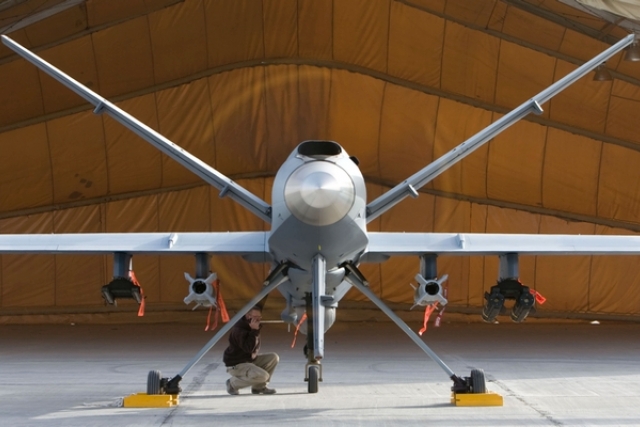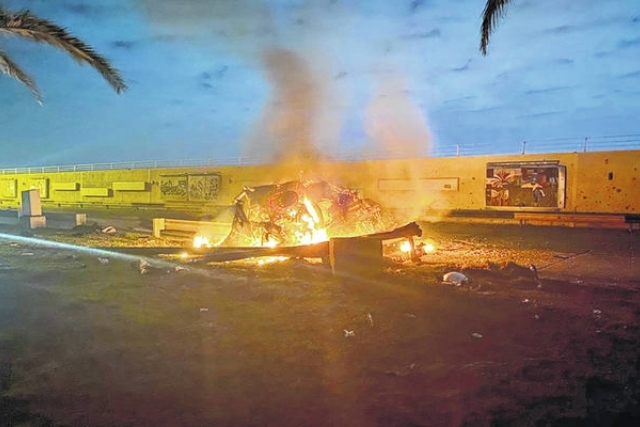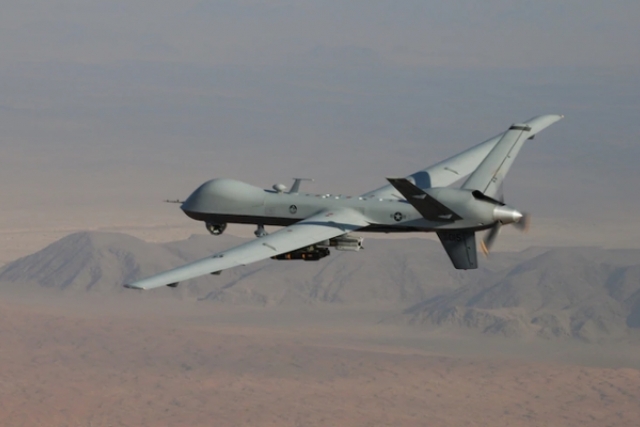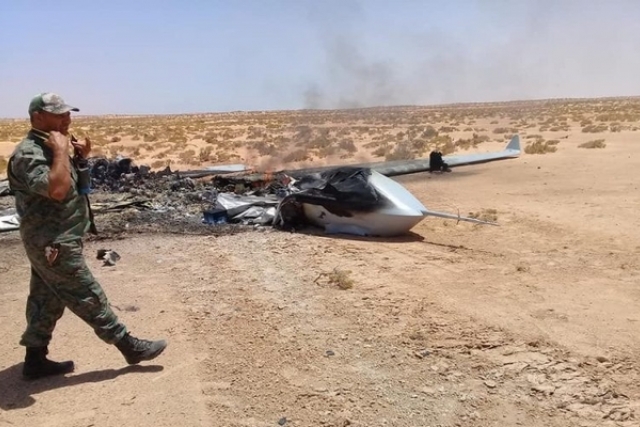Why UAE’s MQ-9B Armed Drone Purchase Should Worry Iran

MQ-9 Drone. USAF Photo
The MQ-9B Remotely Piloted Aircraft (RPA) to be acquired by the United Arab Emirates (UAE) is intended to give a huge advantage to Abu Dhabi over its traditional adversary, Iran.
The $2.7 billion sale of 18 weapons-ready MQ-9B drones approved by the US state department last week is a munitions powerhouse- 515 units of Hellfire missiles, Joint Direct Attack Munitions (JDAM), 500LB/250PB Paveway II GBU- aerial laser-guided bombs and GBU-39 Small Diameter Bomb.
All of these weapons are compatible with the F-35 stealth fighter jet which is also part of the Pentagon’s sales package approved for the UAE.
MQ-9B to Alter Military Balance in Arabian Gulf
The US has made no bones as to the technological superiority of the MQ-9B in comparison to Iranian military assets. The notice of sale announced by the US Defence Security Cooperation Agency (DSCA) asserts, “The proposed sale of this equipment will alter the basic military balance in the Arabian Gulf region by expanding the release of a weapons-ready RPA.” The reference to “Arabian Gulf” points to Iran which is locked in a battle for supremacy with the UAE for control of the Arabian Gulf which is calls as the “Persian Gulf.”
Besides Intelligence, Surveillance, and Reconnaissance (ISR), the MQ-9Bs will enable target acquisition, submarine hunting and counter-land and counter-surface sea capabilities for the UAE’s defense forces.

A version of this drone, the MQ-9 Reaper was used in the targeted assassination of Iranian general, Qasem Soleimani on January 3, 2020 that killed 9 other people. Two MQ-9 drones are believed to have fired Hellfire missiles that annihilated the two-car convey in which Soleimani was being ferried from Baghdad airport to a meeting with Iraqi military representatives.
The MQ-9B that comes in SkyGuardian/SeaGuardian versions is an improvement over the MQ-9 Reaper.
Precision targeting system
The version approved for the UAE has the Multi-Spectral Targeting System, which precisely designates targets for employment of laser-guided munitions, such as the Guided Bomb Paveway II. The MQ-9B is also equipped with synthetic aperture radar to enable GBU-38 Joint Direct Attack Munitions targeting. The MQ-9 can also employ four laser-guided, Air-to-Ground Missile (AGM)-114 Hellfire missiles, which provide highly accurate, low-collateral damage, anti-armor and anti-personnel engagement capabilities.
The MQ-9B can support strike aircraft and ground commanders by acquiring and tracking dynamic targets or other useful intelligence. It is also capable of supporting a wide range of operations such as coastal and border surveillance, weapons tracking and embargo enforcement. Utilizing satellite communication links, the RPA can acquire and pass real-time imagery data to ground users.
Anti-submarine, anti-surface capabilities
Of particular concern to Iran should be MQ-9B’s submarine hunting and counter-land and counter-surface sea capabilities. Tehran has in the past used its naval assets to harass commercial and naval ships of the UAE and Saudi Arabia. Powered by the SeaSpray 7500 maritime radar, armed MQ-9B will be able to spot suspicious Iranian naval activities and fire missiles or precision-bombs if necessary.
The GBU-39 Small Diameter Bomb (SDB) approved for the UAE is the latest US precision-guided munition that also flies on board the F-22 and F-35. The SDB has glide wings that open out upon deployment. It has a claimed range of 60 miles allowing the MQ-9B to launch it from a stand-off distance. It can be guided to its target in an urban environment penetrating up to 5 feet of concrete.

Electronic counter-measures
New in the UAE’s MQ-9B is Leonardo’s Sage 750 electronic emission sensor pod whose in integration was announced by MQ-9B manufacturer General Atomics in September this year. The pod will search for radar waves such as those coming from radar-guided surface-to-air missile batteries on land sites or on ships.
According to Leonardo, the Sage 750 can pinpoint the source of radar emissions and identify the type of weapon system. Once a threat is detected, it can signal other sensors to launch electronic attack or send the information to ground control for appropriate action, the company. The Sage 750 also records each emission detected to analyze the radar signature and build electronic warfare databases.
In situations like the June 2019 incident in which a missile from the Iranian Khordad 3 air defense system shot down a US RQ-4 Global Hawk surveillance aircraft, the Sage 750 electronic emission sensor pod will be able to identify the source of radar lock-on before the missile is fired.
The loitering MQ-9B should be able to deter the Iranians from activating their air defence systems for fear of its missile batteries being detected and fired upon.
The UAE’s proposed MQ-9B is able to meet NATO military airworthiness requirements besides intermingle with civilian traffic. Its Due Regard Radars (DRR) will allow it to detect civilian airliners and move away from their flight path. The skies over the UAE and the Persian/Arabian Gulf are among the busiest in the world of civil aviation. The DDR equipped MQ-9B will be able to operate without fear of collision with a civilian airliner.

UAE’s experience with Wing Loong II attack drones
When the UAE receives its MQ-9Bs, it will add to its inventory of attack and surveillance drones- which includes the Chinese Wing Loong II, and become the only country in the world to have both Chinese and US made UAVs.
The UAE Army has deployed its drones in the Libyan civil war on the side of the Haftar militia and one of its Wing Loong II drones is believed to have knocked down Turkish air defence systems. It is also believed to have used its Wing Loong IIs in Yemen where it is part of the Saudi-led coalition fighting the Iran-backed Houti rebels.
Some of the UAE’s drones have been shot down in Libya, according to reports and images published in the media. Nevertheless, the experience gained from the usage of drones in battlefield will help it to utilize its advanced MQ-9Bs more effectively.









